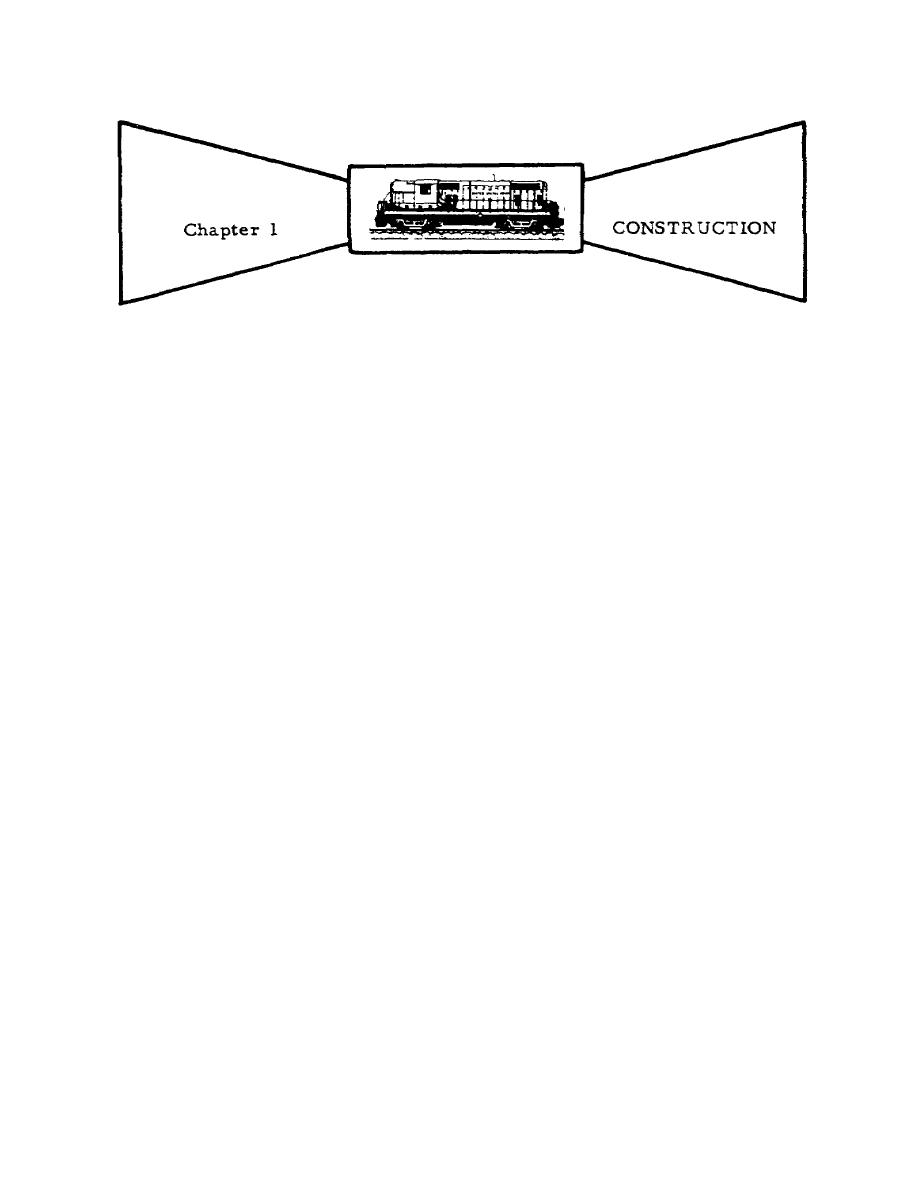
1.1.
INTRODUCTION
Understanding what is wrong with a locomotive presupposes a knowledge of locomotive
construction. If a repairman knows how the parts of the locomotive work, it is easy for him to discover
what is wrong with them; but if he does not, maintenance and repair instructions seem difficult. For this
reason, and to introduce some of the terms commonly heard in the repair shop, this chapter contains a
simple explanation of mechanical and electric principles applicable to the diesel-electric locomotive.
Section I discusses the mechanical construction of the locomotive and section II the fundamentals of the
electric system.
Section I. Mechanical Structure
1.2.
GENERAL
When fuel is injected into an engine cylinder, heat is required to ignite it. In an automobile
engine, high voltage from the battery pushes current through a high resistance set up by the pressure in
the combustion chamber and across from one spark plug electrode to the other. The hot spark created
ignites the fuel-air mixture. There are other ways, however, to get the heat required for combustion. For
example, a diesel engine uses compressed air, which heats as it is compressed.
The two basic designs of diesel engines are the two-stroke-cycle and the four-stroke-cycle. Both
work on the same principles, but with variations due to differences in their construction. This section
discusses the two designs. It also describes the engine and its components and explains how they
operate. It covers the fuel, water cooling, oil, and airbrake systems and the locomotive trucks and
accessories. Figure 1.1, a cutaway view, shows the location of the various parts in a typical diesel-
electric locomotive.
3



 Previous Page
Previous Page
